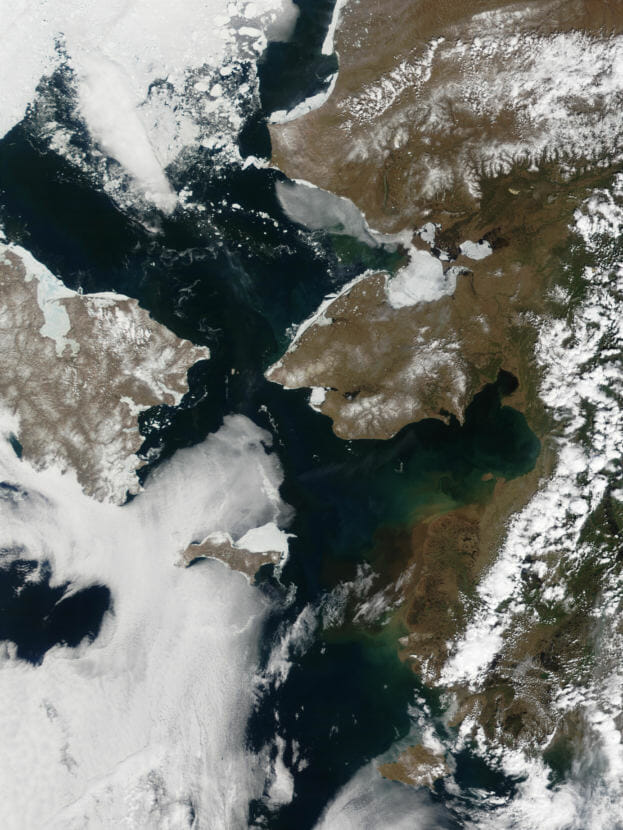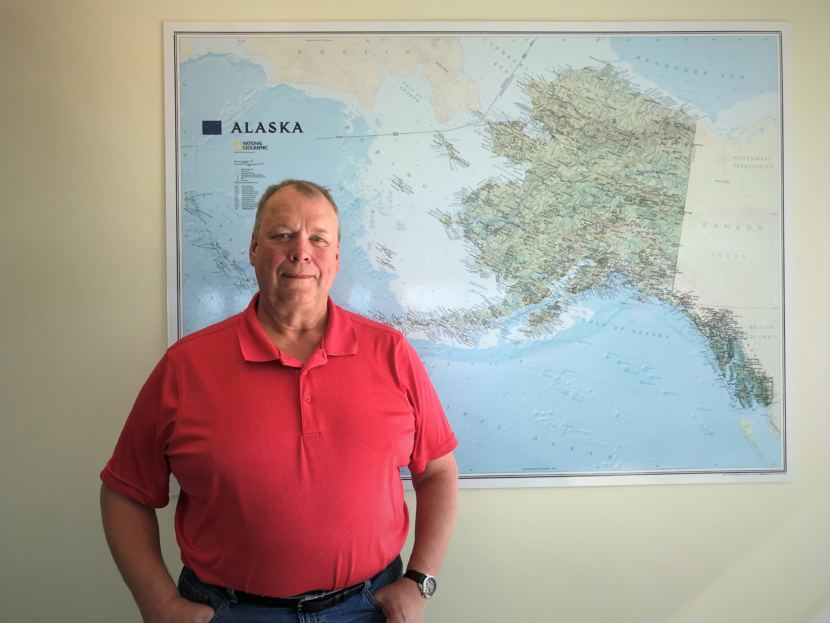
North and southbound lanes, speed limits, areas to be avoided — those are just some of the safety measures in place in the world’s busiest waterways. In the Bering Strait, though, there’s nothing regulating where ships can go and what they should avoid.
But new standards were recently introduced to protect transiting vessels and the marine environment in the waters off Northwest Alaska.
Ask Sharm Setterquist what the Bering Strait is like to sail through when conditions are good, and he’ll smile.
“When you got a beautiful calm night and everything’s flat and you’re just out in the middle of nowhere driving, it’s kind of fun,” Setterquist explained.
Setterquist is a captain for Cook Inlet Tug and Barge. He’s made between 60 to 80 trips through the Bering Strait.
“But when you’re in a storm and nothing is going right,” Setterquist said, “it’s not as much fun.”
Setterquist got his start fishing the Bering Sea, but now captains tugs that pull barges filled with things like freight or fuel.

Tugs plan their delivery schedule around the sea ice.
“At the start of the season you chase the ice north,” Setterquist explained. “You start working in Bristol Bay, then the Kuskokwim and then Norton Sound and then after Norton Sound you make your northern push up to Kotzebue, Wainwright, Kivalina, Point Lay, Point Hope.”
Finishing out in Utqiaġvik and Prudhoe Bay.
Most of the ships sailing through the Bering Strait are doing what Setterquist does, delivering goods to ports along Alaska’s Northwest Coast.
Unlike other international waterways, though, the Bering Strait doesn’t have safety measures in place. There are no designated shipping lanes or shallow areas to be avoided. That’s in part because, on average, the strait sees the same amount of traffic in one season that the English Channel sees in a day.
Still, that hasn’t stopped environmental organizations from lobbying for regulations for years.
Elena Agarkova is an Arctic shipping adviser for the World Wildlife Fund.
“One accident in this region could lead to catastrophic results,” Agarkova said.
“The amount of wildlife, the diversity of wildlife,” Agarkova said of the Bering Strait. “The fact that there are local communities that subsist on the marine mammals, and the fact that some of them are starting to be oil and gas tankers that Russia is sending to Asian markets.”
All of those things, plus the lack of permanent emergency response infrastructure, make the region ripe for disaster.
Agarkova said at first, Russia wouldn’t agree on regulations for the Bering Strait, claiming the U.S. was trying to control vessel traffic. But now Russia is trying to capitalize on the shorter route to Asia, so Agarkova said they saw the value in making the seaway safer.
“The fact that U.S. and Russia have managed to come to an agreement on these measures despite broader political discord is really heartening,” Agarkova said.
The agreement is detailed out on a map of the Bering Strait. The map shows the north and southbound lanes laid out on either side of the Diomede Islands. It also highlights St. Lawrence, Nunivak and King Island as areas to be avoided.
The International Maritime Organization regulates shipping worldwide and approved the standards. But like a lot of international law, they’re voluntary.
Tug captain Sharm Setterquist said that actually doesn’t matter that much.
“It’s like a car,” Setterquist explained. “If you have a bunch of DUIs, no one wants to insure you. If you’re a shipping company that has a bunch of problems, no one wants to insure you. That’s why they have these standards and that’s why people are held to those standards.”
Those standards go into effect in the Bering Strait on Dec. 1.
